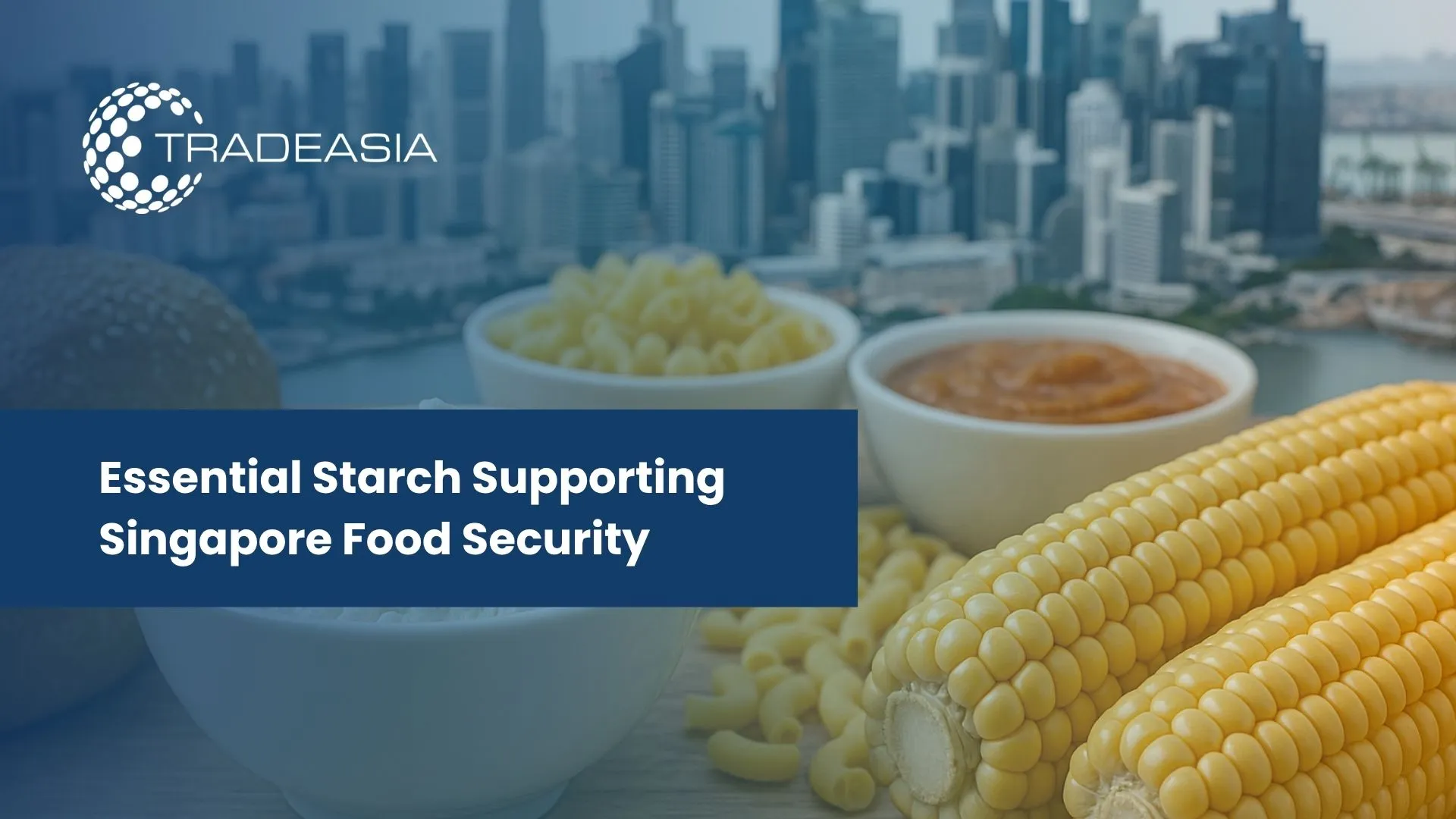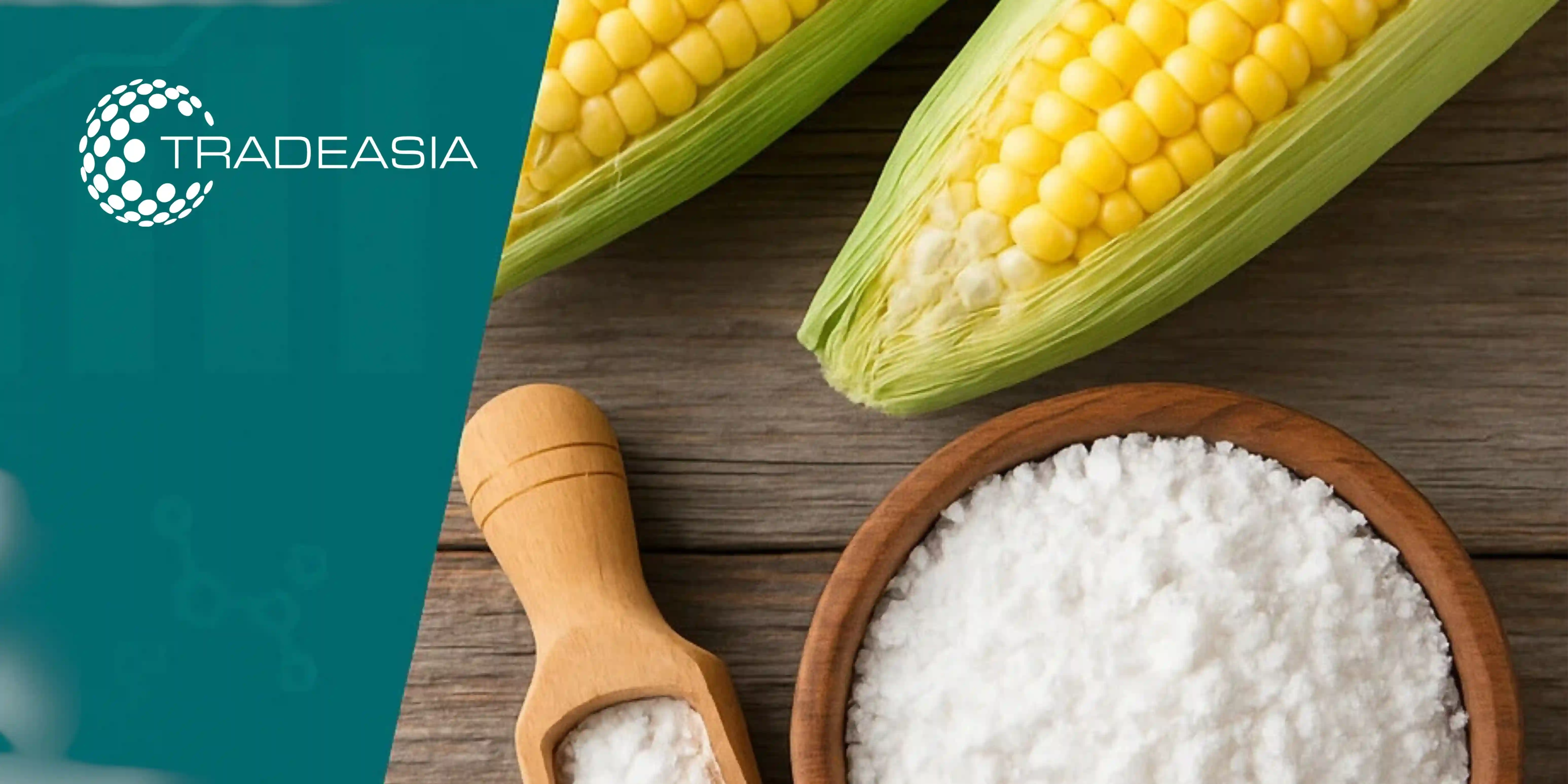Introduction to Maize Starch in Food Ingredients
Maize starch, also known as corn starch, is a carbohydrate extracted from the endosperm of corn kernels. It is one of the most widely used starches in the global food industry, valued for its thickening, stabilizing, and binding properties. From sauces and gravies to bakery items and confectionery, maize starch provides essential functionality in a broad range of food applications.
In Singapore, maize starch has grown in importance due to the country’s position as a hub for food manufacturing and trade. As a nation heavily reliant on imports for raw materials, Singapore strategically sources maize starch from global suppliers, ensuring consistent supply for its food processing industries.
The role of maize starch extends beyond culinary functions. It supports the development of innovative food products that meet consumer preferences for texture, stability, and quality. Its adaptability across cuisines and product categories ensures it remains a key ingredient in Singapore’s diverse food landscape.
As the global food industry trends toward clean-label and sustainable ingredients, maize starch continues to offer opportunities for innovation. The Singapore market, with its mix of local and multinational food companies, will remain a vital center for demand and product development.
Functional Properties of Maize Starch in Food
One of the primary functions of maize starch is thickening. When heated with water, starch granules swell and gelatinize, creating viscosity. This makes maize starch essential for soups, sauces, gravies, and puddings. Its ability to create smooth, stable textures makes it highly desirable for culinary applications.
Maize starch also functions as a stabilizer and binder. In bakery and confectionery products, it helps maintain structure, prevents syneresis (water separation), and improves shelf stability. This is particularly important in packaged foods where consistent texture is vital for consumer satisfaction.
Another key property is film formation. Maize starch can create edible films that act as protective coatings for food, enhancing appearance and extending shelf life. This application is gaining relevance in Singapore’s processed food sector, which emphasizes both quality and innovation.
Its role as a fat replacer in reduced-calorie foods also supports healthier formulations. As consumer preferences shift toward wellness, maize starch is increasingly used in products that balance nutrition with taste and texture.
Importance in Singapore’s Food Ingredients Industry
Singapore’s food industry is a critical part of its economy, with a strong focus on processing, packaging, and re-export. Maize starch plays a significant role in this ecosystem, serving as a core ingredient in both domestic and export-oriented food production.
Given Singapore’s limited agricultural resources, the nation imports maize starch primarily from countries such as the United States, China, and Thailand. Its advanced logistics infrastructure ensures consistent supply, supporting industries ranging from instant noodles to confectionery.
In Singapore’s multicultural food market, maize starch provides versatility. From thickening Chinese soups and sauces to binding in Malay snacks and Indian sweets, it adapts to diverse cuisines. This adaptability supports both local food culture and international product innovation.
As Singapore invests in its “30 by 30” food security goal, aiming to produce 30% of nutritional needs locally by 2030, maize starch will continue to be part of reformulations that balance imports with innovation in food technology.
Global and Regional Market Demand Drivers
The global maize starch market is driven by rising demand for processed foods. Convenience foods, ready meals, and instant products all rely heavily on starch as a functional ingredient. Singapore, with its fast-paced urban lifestyle, mirrors this trend closely.
Another driver is the health and wellness movement. As consumers seek reduced-fat and gluten-free products, maize starch provides an alternative ingredient that supports clean-label formulations. Its role as a naturally derived thickener appeals to eco-conscious markets.
In Asia-Pacific, urbanization and rising incomes fuel demand for packaged and processed foods. Singapore, as a trade hub, both consumes and re-exports products containing maize starch, amplifying its demand in regional markets.
The increasing use of maize starch in non-food industries such as pharmaceuticals and packaging also contributes to overall demand. While food remains the largest segment, these secondary uses highlight maize starch’s versatility and market resilience.
Applications in Processed Foods and Beverages
In bakery products, maize starch improves texture, extends shelf life, and enhances dough strength. It is used in breads, cakes, pastries, and biscuits to provide desirable softness and stability.
In confectionery and snacks, maize starch functions as a gelling and binding agent. Gummies, candies, and savory snacks rely on starch for consistent shapes and chewiness, making it indispensable in Singapore’s growing snack sector.
In the beverage industry, maize starch-derived sweeteners, such as glucose syrup, are widely used. These sweeteners provide sweetness, viscosity, and mouthfeel in soft drinks, juices, and energy beverages.
Finally, in instant foods and sauces, maize starch serves as a thickener and stabilizer. With Singapore’s busy lifestyle and demand for convenience, these applications are especially relevant in both household and foodservice sectors.
Challenges in Maize Starch Production and Use
One of the main challenges is supply chain dependency. Singapore imports nearly all its maize starch, making it vulnerable to global disruptions, price volatility, and trade restrictions.
Environmental concerns also pose challenges. Maize cultivation is resource-intensive, requiring significant water and fertilizer use. These sustainability concerns influence consumer perception and push manufacturers to seek more eco-friendly starch alternatives.
Another challenge lies in competition from alternative starches such as tapioca, potato, and rice starch. In Asia, tapioca starch is widely available and often preferred for certain applications, presenting competition for maize starch. Finally, regulatory and labeling requirements add complexity. Singapore’s strict food safety regulations demand transparency in sourcing and product composition, requiring manufacturers to maintain high compliance standards.
Opportunities for Innovation and Sustainability
Innovation in modified starches presents significant opportunities. Maize starch can be chemically or physically modified to enhance stability, improve solubility, or withstand high temperatures, expanding its applications in processed foods.
Another opportunity lies in clean-label trends. Consumers are increasingly rejecting synthetic additives, and maize starch, being plant-derived, aligns well with natural ingredient demands. Highlighting maize starch’s natural origin supports clean-label positioning in Singapore’s competitive food market.
Sustainability also creates opportunities. By adopting responsible sourcing practices and investing in low-carbon logistics, suppliers can reduce the environmental impact of maize starch. Singapore’s role as a sustainability hub supports these initiatives.
Finally, collaboration between food manufacturers and research institutions in Singapore can drive new applications of maize starch. From functional beverages to plant-based foods, maize starch has the potential to support innovation in fast-growing categories.
Regulatory Framework and Standards in Singapore
Singapore’s Singapore Food Agency (SFA) enforces strict regulations for food additives and ingredients, ensuring maize starch used in food products is safe and compliant. Imported starch must meet international purity and labeling standards.
Compliance with Codex Alimentarius guidelines ensures consistency across global trade. This regulatory alignment supports Singapore’s role as a trusted hub for food manufacturing and exports. Labeling requirements are another important aspect. Food products containing maize starch must declare it clearly, ensuring transparency for consumers, especially those with dietary preferences or allergies.
Singapore’s regulatory clarity and commitment to food safety strengthen its competitive advantage in global markets. Maize starch suppliers and manufacturers operating within these frameworks build trust and expand market opportunities.
Market Outlook 2025 - 2035
Between 2025 and 2035, the demand for maize starch in Singapore’s food ingredients industry is projected to grow at a CAGR of 4–5%. Rising demand for processed foods, convenience meals, and healthier alternatives will be key drivers.
Singapore’s continued investment in food technology and innovation will support expanded applications of maize starch. The growth of plant-based and functional foods will create new opportunities for starch use in innovative formulations.
Global trade dynamics will also influence Singapore. As a regional hub, the country will benefit from rising demand in Asia-Pacific, where urbanization and population growth continue to drive consumption of starch-based food products.
By 2035, maize starch will remain a cornerstone ingredient in Singapore’s food industry, balancing performance, sustainability, and innovation to meet evolving consumer demands.
Conclusion
Maize starch is an essential ingredient in the global food industry, valued for its functional properties and versatility. In Singapore, it plays a central role in food processing, packaging, and trade, linking local production with global markets.
Its applications span bakery, confectionery, beverages, and instant foods, making it indispensable in both traditional and modern diets. As consumer preferences shift toward natural and sustainable ingredients, maize starch offers opportunities for clean-label positioning and eco-friendly innovation.
Challenges such as supply chain dependency, environmental concerns, and competition from alternative starches must be addressed. However, with strong regulatory frameworks and innovation-driven strategies, Singapore is well-positioned to sustain demand for maize starch.
Ultimately, maize starch represents more than a food ingredient; it is a strategic material that supports Singapore’s food security, trade, and innovation goals. Its role in shaping the future of the food ingredients industry will remain vital through 2035 and beyond. For more information or to connect with reliable maize starch suppliers in Singapore, reach out to our team today.
References


Leave a Comment